London Zoo, previously known as ZSL London Zoo or London Zoological Gardens and sometimes called Regent's Park Zoo, is the world's oldest scientific zoo. It was opened in London on 27 April 1828, and was originally intended to be used as a collection for scientific study. In 1831 or 1832, the animals of the Tower of London menagerie were transferred to the zoo's collection. It was opened to the public in 1847. As of December 2022, it houses a collection of 14,926 individuals, making it one of the largest collections in the United Kingdom.
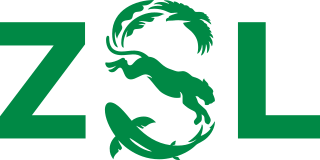
The Zoological Society of London (ZSL) is a charity devoted to the worldwide conservation of animals and their habitats. It was founded in 1826. Since 1828, it has maintained London Zoo, and since 1931 Whipsnade Zoo.

Whipsnade Zoo, formerly known as ZSL Whipsnade Zoo and Whipsnade Wild Animal Park, is a zoo and safari park located at Whipsnade, near Dunstable in Bedfordshire, England. It is one of two zoos that are owned by the Zoological Society of London (ZSL), a charity devoted to the worldwide conservation of animals and their habitats.
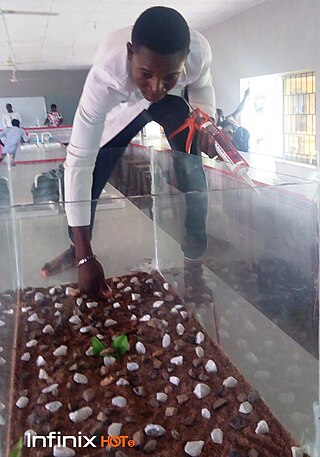
An aquarist is a person who manages aquariums, either professionally or as a hobby. They typically care for aquatic animals, including fish and marine invertebrates. Some may care for aquatic mammals. Aquarists often work at public aquariums. They may also work at nature reserves, zoos, and amusement parks. Some aquarists conduct field research outdoors. In business, aquarists may work at pet stores, as commercial fish breeders, or as manufacturers. Some aquarists are hobbyists, also known as "home aquarists," who may vary in skills and experience.

David William Mitchell was an English zoologist and illustrator.
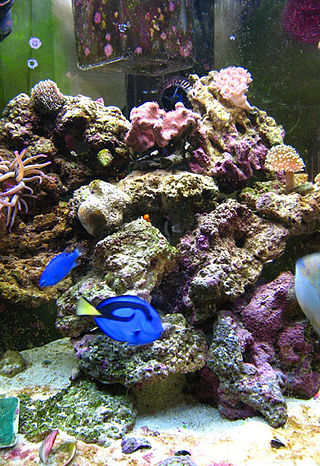
A marine aquarium is an aquarium that keeps marine plants and animals in a contained environment. Marine aquaria are further subdivided by hobbyists into fish only (FO), fish only with live rock (FOWLR), and reef aquaria. Fish only tanks often showcase large or aggressive marine fish species and generally rely on mechanical and chemical filtration. FOWLR and reef tanks use live rock, a material composed of coral skeletons harboring beneficial nitrogen waste metabolizing bacteria, as a means of more natural biological filtration.

Madrepora is a genus of stony corals, often found forming reefs or islands in tropical locations. The names Madrepore and Madreporaria were formerly applied universally to any stony coral of the family Scleractinia. They reproduce in three separate ways, as discovered by the marine zoologist Anne Thynne (1800–1866). It is commonly known as horn coral. A colony is branched with small polyps in cylindrical cups separated by a perforated coenosteum. Terminal polyps bear six tentacles, while lateral polyps bear twelve tentacles. Madrepora is economically important, since it contributes to the formation of coral reefs.

William Thompson was an Irish naturalist celebrated for his founding studies of the natural history of Ireland, especially in ornithology and marine biology. Thompson published numerous notes on the distribution, breeding, eggs, habitat, song, plumage, behaviour, nesting and food of birds. These formed the basis of his four-volume The Natural History of Ireland, and were much used by contemporary and later authors such as Francis Orpen Morris.
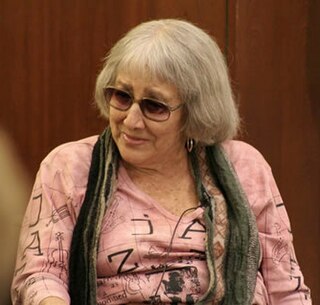
Eugenie Clark, popularly known as The Shark Lady, was an American ichthyologist known for both her research on shark behavior and her study of fish in the order Tetraodontiformes. Clark was a pioneer in the field of scuba diving for research purposes. In addition to being regarded as an authority in marine biology, Clark was popularly recognized and used her fame to promote marine conservation.
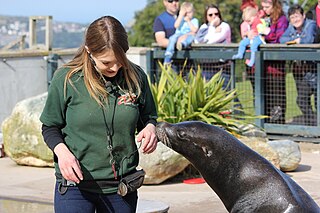
A zoo is a facility in which animals are kept within enclosures for public exhibition and often bred for conservation purposes.

A public aquarium (pl. aquaria) or public water zoo is the aquatic counterpart of a zoo, which houses living aquatic animal and plant specimens for public viewing. Most public aquariums feature tanks larger than those kept by home aquarists, as well as smaller tanks.

An aquarium is a vivarium of any size having at least one transparent side in which aquatic plants or animals are kept and displayed. Fishkeepers use aquaria to keep fish, invertebrates, amphibians, aquatic reptiles, such as turtles, and aquatic plants. The term aquarium, coined by English naturalist Philip Henry Gosse, combines the Latin root aqua, meaning 'water', with the suffix -arium, meaning 'a place for relating to'.
Gordon McGregor Reid PPFLS was Director General and Chief Executive of the North of England Zoological Society, popularly known as Chester Zoo. He stepped down in 2010. The North of England Zoological Society is an independent charity for conservation, education and science. It is also one of the leading wildlife attractions in the UK, receiving well over one million paying guests each year.

A nocturnal house, sometimes called a nocturama, is a building in a zoo or research establishment where nocturnal animals are kept and viewable by the public. The unique feature of buildings of this type is that the lighting within is isolated from the outside and reversed; i.e. it is dark during the day and lit at night. This is to enable visitors and researchers to more conveniently study nocturnal animals during daylight hours.
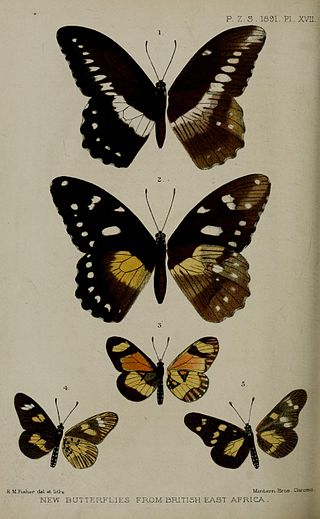
Emily Mary Bowdler Sharpe, was an English entomologist, colourist and illustrator.

Heather Koldewey is the co-founder of Project Seahorse and head of marine and freshwater for the Zoological Society of London-London Zoo Aquarium. She additionally serves as an honorary professor for University of Exeter and a National Geographic explorer. Her research interests focus on marine and freshwater conservation, seahorse biology and genetics, and the impact of the aquarium trade on wild populations of fish and aquatic invertebrates.

Joan Beauchamp Procter was a notable British zoologist, internationally recognised as an outstanding herpetologist. She worked initially at the British Museum and later for the Zoological Society of London, as the first female Curator of Reptiles at London Zoo. Her short life was afflicted by chronic ill-health, but she undertook substantial taxonomic work and made significant innovative contributions to veterinary practice and zoo displays. She also wrote scientific and popular zoological articles, including early accounts of the behaviour of captive Komodo dragons.
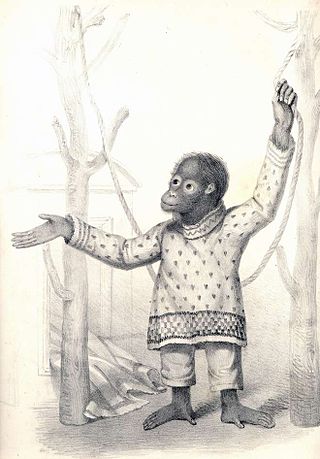
Lady Jane, known as Jenny, was an orangutan kept in captivity in London Zoo between November 1837 and her death in May 1839. She was the first of her species at the Zoo and is remembered for her meeting with the naturalist Charles Darwin who compared her reactions to those of a human child. The experience reinforced Darwin's view that human beings were "created from animals". He wrote in his notebook that after meeting an animal like Jenny, no man could "boast of his proud preeminence".

Rev. Lord John Thynne was an English aristocrat and Anglican cleric, who served for 45 years as Deputy Dean of Westminster.

Granny was the affectionate name eventually given to a beadlet sea anemone, Actinia equina, which in 1828 was taken from a rocky shore at North Berwick in Scotland by an amateur naturalist, John Dalyell. During her long life through the Victorian era, she was cared for by a series of Edinburgh naturalists. Long outliving Dalyell, this sea anemone lived alone in a jar where she gave birth to several hundred offspring before her death in 1887.


















